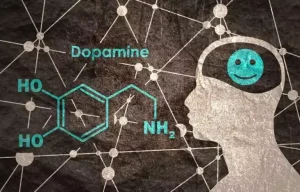
For women, it’s defined as three drinks a day or more than seven drinks a week (1). Moderate drinking is defined as 14 or fewer drinks per week for men, and seven or fewer drinks per week for women. Watching for physical signs of alcoholism or alcoholic face is easier what is alcoholism when you know you or a loved one have been drinking too much. You can’t assume the same about everyone you see with a red or puffy face.
- While many of us may wake up looking tired or slightly puffy from a late night out drinking, “alcoholic face” refers to noticeable changes in our appearance that occur over time due to alcohol’s effects on our body.
- Although you may still suffer a hangover the next day, drinking lighter drinks may minimise your suffering slightly (and the amount of bacon sandwiches you have to consume!) because they don’t contain congeners.
- In fact, a study by the British Medical Association found bourbon is twice as likely to cause a hangover as the same amount of vodka.
- “Alcoholic face” is a term that’s used to describe specific facial characteristics commonly seen in those who drink regularly or excessively.
- Red cheeks from drinking is often due to aldehyde dehydrogenase 2 (ALDH2), an enzyme in the liver that breaks down alcohol’s toxic compound.
- Medina Azaldin is the beauty editor of ELLE and Harper’s Bazaar UK, working across print and digital features.
Understanding Alcoholism and Its Effects on the Face
Drinking heavily can worsen the symptoms for each, causing flare-ups due to inflammation. Research shows alcohol use also may be tied to the most common types of skin cancer. Your body works to repair DNA damage caused by the sun, but alcohol can interfere with that process. People mistakenly believe that anyone who has a red face drinks too much. «Rosacea is an inflammatory condition that can be genetic,» said Dr. Steve. «And there is evidence of an ethnic predisposition, prevalent in of fair-skinned heritage such as Irish, English, Scandinavian, Scottish, and similar descents.»
Other Factors That Cause Puffy Face
Alcohol can increase health risks as you age, especially for people with chronic conditions like high blood pressure, diabetes or heart disease. Drinking can also contribute to severe health conditions such as liver disease, osteoporosis, dementia and certain cancers. Alcohol can also lower your immune system, making it harder to bounce back from illnesses. Alcohol can drain the body of vitamin A, which is the vitamin responsible for cell turnover.
Liver and Kidney Function

We draw on proven science and dermatological expertise to create comprehensive skin, hair and body care that fits you perfectly. And we strive to make caring for yourself really easy and truly how alcohol affects your face enjoyable. «Rosacea patients describe that sucking on ice chips after having wine is helpful, because it can mitigate the flares and flushing,» said Dr. Steve.
- Clear spirits like vodka and gin go through rigorous distillation process to remove impurities and they contain fewer additives.
- You can get rid of puffy face from alcohol by drinking water, getting plenty of rest, and applying a cold compress to puffy areas.
- Dehydration is a biggie when it comes to dry skin, puffiness, and management of skin conditions like psoriasis or rosacea.
- This is also thought to be due to oestrogen, as it sometimes observed during normal pregnancy.
- Try regular hydration with hyaluronic acid — it’s in our Active Recovery Hydro-Gel.
What Is Holistic Addiction Treatment?

While alcohol can cause short-term facial effects such as irritated skin and an overall tired appearance, “alcoholic face” typically includes more permanent facial changes. Drinking plenty of water can help combat the dehydrating effects of alcohol and improve skin moisture levels. A balanced diet rich in vitamins and antioxidants can support skin repair and regeneration. Incorporating fruits, vegetables, and foods with omega-3 fatty acids can be beneficial. Addressing alcohol-related skin damage is possible, but it often requires a multi-pronged approach that may vary depending on the severity of the damage.

For a puffy face
This is because purple bags, more commonly referred to as dark circles, are known to develop under your eyes as a result of dehydration and inflammation that is caused by excess consumption of alcohol. Heavy drinking can also affect the quality of sleep, featuring as another cause for the under-eye shadows. Alcoholism is a complex and serious condition that manifests in various ways, including physical signs on the face.
- On average, a 12-ounce beer has about 150 calories, and 5 ounces of wine has about 120 calories (4).
- Treatments will vary based on the condition, so a person should speak with a doctor about the best treatment options for them.
- Metabolism naturally slows as we age, which affects how our body processes alcohol.
Wine or champagne were the most commonly consumed alcoholic beverages by women of all age groups (Figure 2C). From dehydration to accelerated aging, the effects are hard to ignore. Plus alcohol can trigger skin conditions like rosacea and worsen existing ones like acne and psoriasis. One of the best things we can do for our skin — and overall health — is to cut back on alcohol or quit drinking altogether. However, if we do choose to drink, we can protect our skin by staying hydrated, eating a balanced diet, following a consistent skin care routine, exercising regularly, and getting adequate sleep. However, for skin conditions related to AUD, liver disease, or excessive alcohol consumption, the best preventive measure is to stop drinking alcohol.
Effects of alcohol on skin and 6 expert-approved tips for repairing the damage
You’ll meet millions of fellow Reframers in our 24/7 Forum chat and daily Zoom check-in meetings. Receive encouragement from people worldwide who know exactly what you’re going through! You’ll also have the opportunity to connect with our https://ecosoberhouse.com/ licensed Reframe coaches for more personalized guidance. The Reframe app equips you with the knowledge and skills you need to not only survive drinking less, but to thrive while you navigate the journey.

Inflammed blood vessels, rashes, sagging eyes, and odor issues can all be eased or eradicated through reduced alcohol consumption and medical treatment. Others, such as jaundice caused by liver disease and skin cancer are less treatable and are often a sign of end-stage alcoholism. In fact, an “alcoholic face” encompasses a range of physical changes — telltale signs of chronic alcohol consumption. Even if we follow a 10-step skincare routine, eat an anti-inflammatory diet, and make sure to put on sunscreen every day, excessive drinking can appear on our face. Clear associations were found between skin-and volume-related facial aging and smoking and heavy alcohol consumption.
“Alcohol can also stack with medication side effects, sometimes leading to dangerous doubling effect,” Dr. LaBruzzo said. You aren’t alone if you’ve ever wondered why a few drinks feel different now than they did a decade ago. Many of us notice that alcohol hits harder as we get older — even if our drinking habits haven’t changed. There are many triggers, like sunlight, hairspray, heat, stress, and spicy foods — and alcohol.
